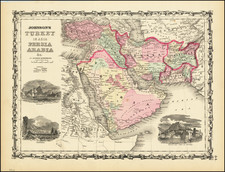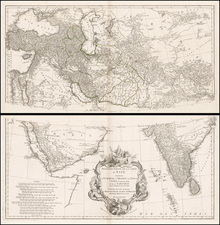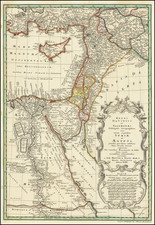Detailed map showing the military movements during the 1956 Suez Crisis.
The Suez Crisis, also referred to as the Tripartite Aggression, Suez War, or Second Arab-Israeli War, was a diplomatic and military confrontation in late 1956 between Egypt on one side, and Britain, France and Israel on the other.
The map shows the various troup movements during the War portion of the Crisis, along with the location of roads, oil, etc.
The attack followed the President of Egypt Gamal Abdel Nasser's decision in July 1956 to nationalize the Suez Canal, after the withdrawal of an offer by Britain and the United States to fund the building of the Aswan Dam, which was in response to Egypt's new ties with the Soviet Union and recognizing the People's Republic of China during the height of tensions between China and Taiwan. The aims of the attack were primarily to regain Western control of the canal and to remove Nasser from power, and the crisis highlighted the danger that Arab nationalism posed to Western access to Middle East oil.
Less than a day after Israel invaded Egypt, Britain and France issued a joint ultimatum to Egypt and Israel, and then began to bomb Cairo. Despite the denials of the Israeli, British, and French governments, allegations began to emerge that the invasion of Egypt had been planned beforehand by the three powers. Anglo-French forces withdrew before the end of the year, but Israeli forces remained until March 1957, prolonging the crisis. In April, the canal was fully reopened to shipping, but other repercussions followed.
The three allies, especially Israel, were mainly successful in attaining their immediate military objectives, but pressure from the United States and the USSR at the United Nations and elsewhere forced them to withdraw. As a result of the outside pressure Britain and France failed in their political and strategic aims of controlling the canal and removing Nasser from power. Israel fulfilled some of its objectives, such as attaining freedom of navigation through the Straits of Tiran. As a result of the conflict, the UNEF would police the Egyptian-Israeli border to prevent both sides from recommencing hostilities.









![Syrie Ancienne [shows Cyprus]](https://storage.googleapis.com/raremaps/img/small/89269.jpg)
![(Arabian Peninsula) [Sexta Asie Tabula, Arabia Felix.]](https://storage.googleapis.com/raremaps/img/small/94180.jpg)



